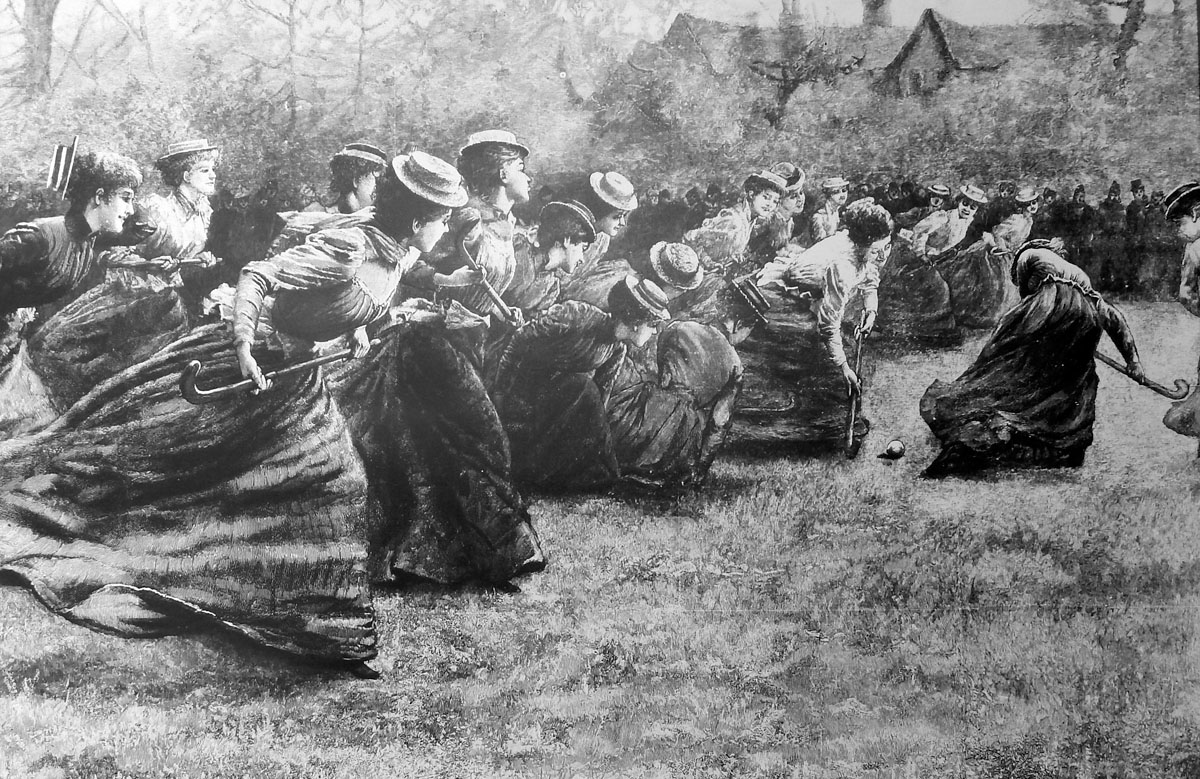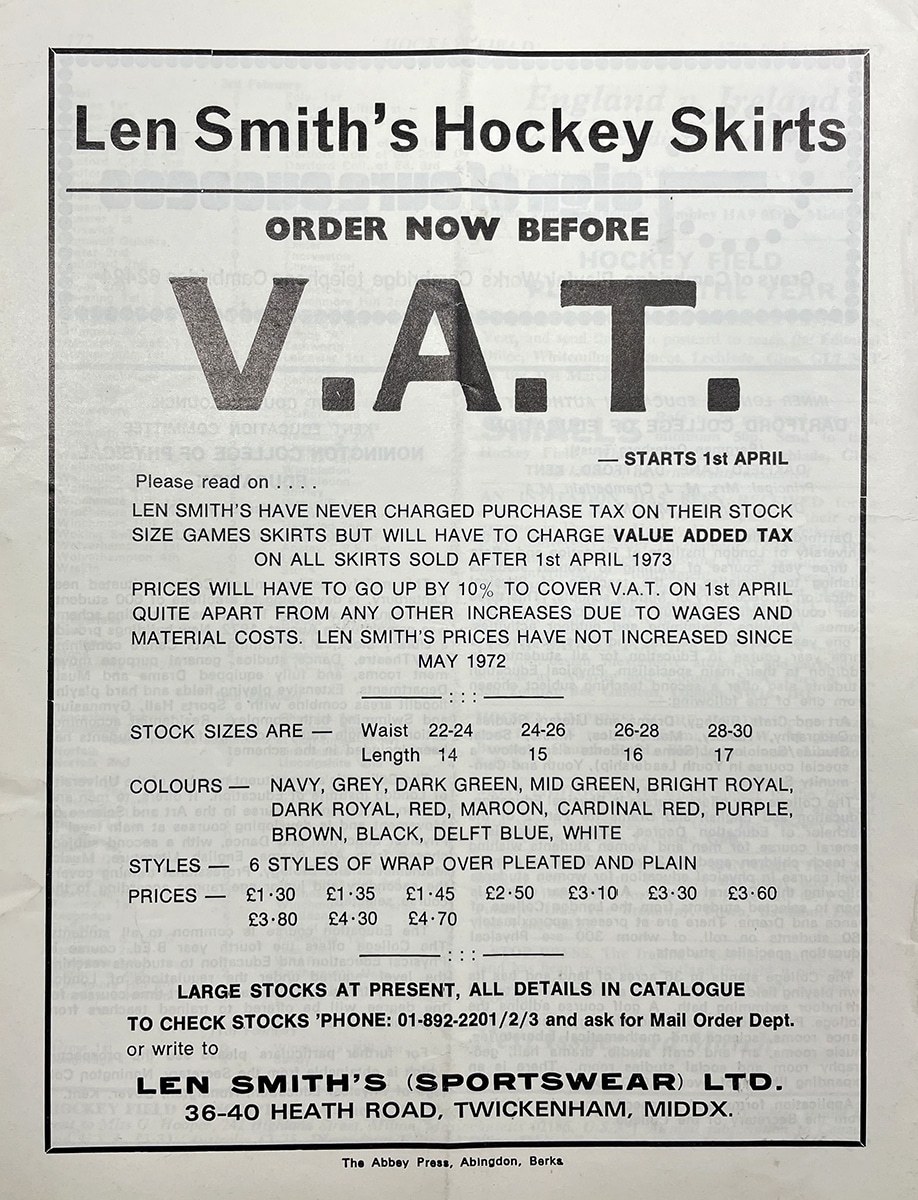A Ladies’ Hockey Club at Play, c.1894. Engraving after an artwork by Lucien Davis.
100 years ago, an article was published in Hockey Field and Lacrosse magazine that discussed women’s hockey 25 years prior. This takes us back to hockey in 1899, to Victorian England at the turn of the 19th century, a period of hockey very visually different to the game we know today. Interestingly, the author uses books from the early 1900s to compare how hockey differed for women in the 1920s.
From the article it is evident that one of the major differences was the cost of participation, as well as the clothing and equipment used.
Victorian Hockey Equipment and its Cost
The 1924 article refers to a book written by Mrs W H Pickering (left-back for the Midlands and England team) in 1901 called Hockey for Ladies. In it she outlines the prices of sticks and balls. A really first-class stick cannot be sold for less than 7/6” (7 shillings and 6 pence). This price would have been equivalent to roughly £30 in today’s money. Mrs Pickering goes on to say that a ball would have cost a player “4/6” – in 2024 prices this would be £18. The author of the 1924 article expressed a light-hearted remark on how cheap these prices were 25 years ago. Adverts from The Hockey Museum collection dating from 1924 support this and show hockey sticks ranging from 14-21 shillings with a ball costing 12 shillings each.
In the book Athletics and Outdoor Sports for Women published in 1903, balls are described as “ordinary cricket balls painted white” and the author encourages girls to buy a stick of their own. “Each player should possess her own stick, for it is surprising how soon a hockey stick winds itself into one’s affections, and the difficulty with which one handles a strange one”.
Women’s Hockey Kit and Clothing in the 1890s
The 1924 article also refers to a book about the history of The Blackheath Hockey Club that includes a few interesting notes on “Health and Equipment”. This account was written in 1897 and the 1924 author describes it as “amusing reading now-a-days” as she shares a jovial remark particularly on the skirts of 25 years prior.
“All ladies must be able to stoop, breathe and to bend with absolute ease; this they can easily arrange for, and must do so if they are to play well and gracefully; also to keep their colour and breath…it is really painful to see attempts at play in neat little shoes and worked stockings, ordinary skirt [and remember what an ‘ordinary skirt’ of 1897 was!] and the bodice or upper portion of the dress fitting like a glove”.
Blouses are also discussed. They must be of “good flannel” and for international players a “white linen blouse must be lined with white flannel”. As The Blackheath Hockey Club author explains, this is for protection and was deemed “absolutely necessary” for matches. All players on the team wore caps also made of flannel and should be fastened on the player’s head with “four hair pins in the lining of the cap”. Like the linen blouse, these caps were also used for protection of players. The author explains that the cap “protects against blows, against wet, and keeps one when hot, or when playing, or standing in the wind, from chills and neuralgia”! This choice of headwear was seemingly common, as shown by an engraving dated in 1894 by Lucien Davis which depicts a hockey match with each player equipped with a boater-style hat.
Wearing hats in matches would have been a big difference for the 1924 author. The safety of players meant that hats became a disputed item of kit in 1895 and it was proposed in an Annual General Meeting of the All England Women’s Hockey Association (AEWHA) that “No player shall wear hat pins, or sailor or other hard-brimmed hat”. Initially rejected, this regulation was only formally recognised several years later in 1898 leading to the decrease of hats in matches thereafter.
For more information on this: A Brief History of Women’s Headwear in Hockey | The Hockey Museum









